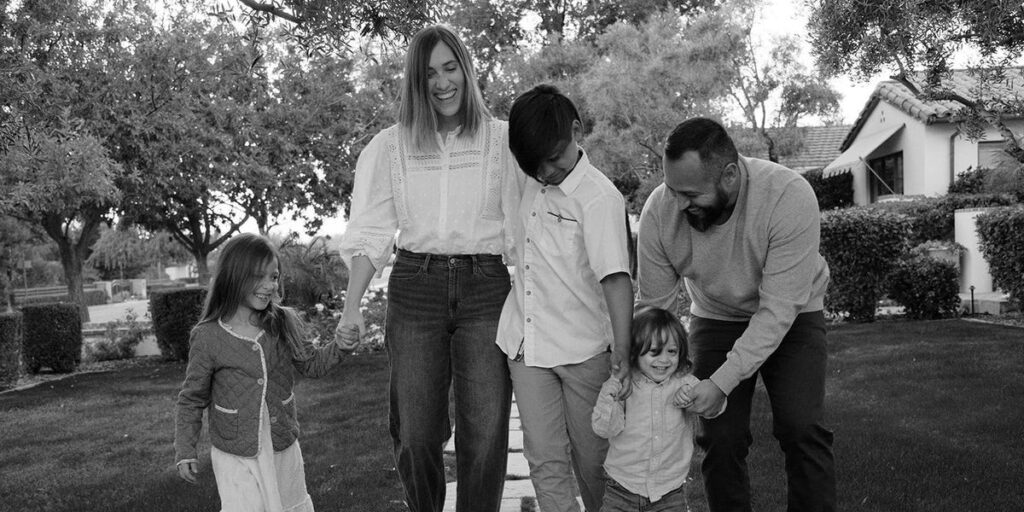One afternoon, I carted my oldest children off to the bank to open accounts for them. They couldn’t wait to choose debit cards that reflected their personal style — for my daughter, golden retriever puppies; for my son, doodle drawings.
The banker inquired about their ages.
“Seven and 12,” I said, “with a 2-year-old at home. Too young to open an account yet.”
The banker’s eyebrows lifted. “All of them five years apart?”
“Yes,” I answered.
She let out an abrupt laugh that caught me off guard. “Oh, honey,” she said, clicking on her keyboard with her acrylic nails, “that’s a funny age spread. What made you do that?”
I straightened in the plastic chair and shrugged, unwilling to defend myself. Life just happened this way. And though it’s not ideal by society’s standards — nearly everyone I meet declares they want their kids to be “close in age” — I’ve found the five-year age gap between my kids has some surprising advantages, along with expected challenges.
I can enjoy one baby at a time
My pregnancies were nauseous, achy, sleepless affairs. But the postpartum phase with a tiny newborn snuggled against my chest — heaven. I relished each baby phase, partly because I could devote so much attention to this littlest human, given the five-year age gap between each child. I only had one diaper to change, one child to nurse, and one napper’s schedule to consider at a time. I soaked in each milestone — every first food, teetering step, and stuttered word.
Meanwhile, many of my friends with babies and toddlers of a similar age admitted that their days blurred together, as they constantly met the demands of two small children at once.
My children do play together
I’ve read that a five-year age gap means you’re essentially raising only children. That hasn’t been our experience. In our smaller home, the kids spend plenty of time together building forts, wrestling, riding bikes, and scheming up other childish shenanigans. They have to share, resolve conflicts, and help each other — same as every sibling relationship.
Admittedly, I do sometimes wish they were closer in age because I worry they may drift apart as my eldest enters the teenage years, but a closer gap means I wouldn’t have the kids I have — and I would never trade them.
Certain activities and school can be challenging
Due to the age difference, my children won’t be in the same school together for very long, leading to different drop-offs and pick-ups. While my older two sometimes overlap activities, more often they don’t.
At practices, I’m usually chasing the toddler around because he’s too young to participate. I’m parenting three very different stages at once, which requires extra brain space to coordinate. But since it’s all I’ve ever known, it feels normal to me.
Parenting trends change on me
Parenting trends seem to shift in five-year cycles. With my eldest two, I was a baby-wearing devotee, testing every wrap and sling until I finally settled on the Ergo, then the trendy Tula — easy, click-and-go. My babies practically lived in them. This last time around, I started noticing parents with the Tushbaby hip seat carrier. I resisted, stuck in my Ergo-Tula ways, until my friend, a mother of six, convinced me to try it.
“It’s easier on my back,” she said. “Just adds extra support when you’re already carrying the tot around.”
She was right. It was a nice alternative when I didn’t want to bear the full weight of a toddler.
And, of course, there are the ever-evolving parenting philosophies. A decade ago, I leaned heavily on gentle parenting mixed with “love and logic.” My oldest had choices all day long: this or that, yes or no. But by my third, I’ve developed my own hodgepodge approach that leans more on intuition and less on what influencers and articles say, as it seems this new wave of parents has too.
Maybe that’s the real lesson of having three kids spread across a decade: you learn to stay flexible, adapt, and keep an open mind.
Read the full article here
















